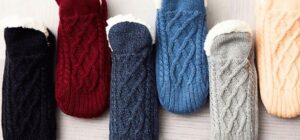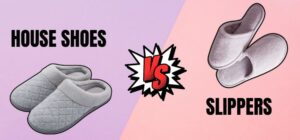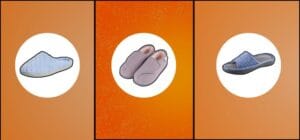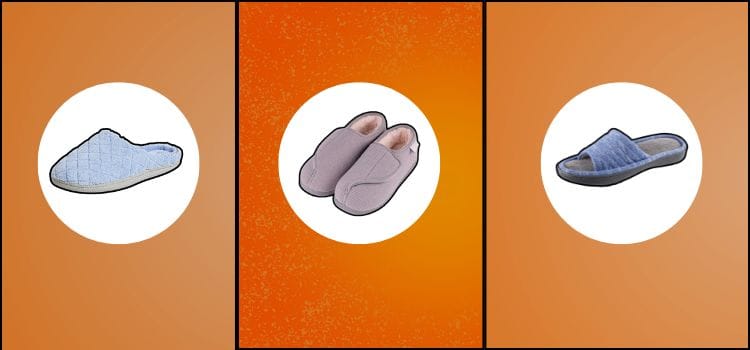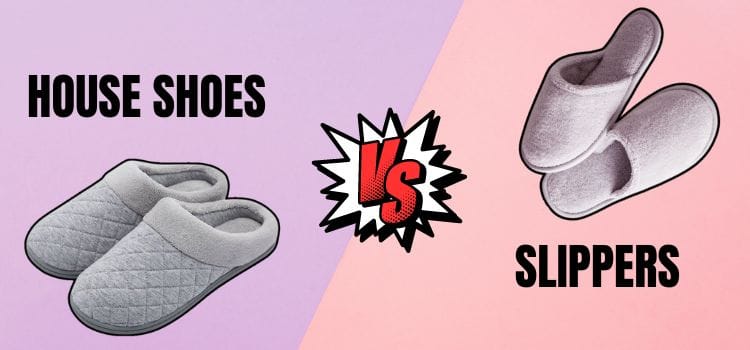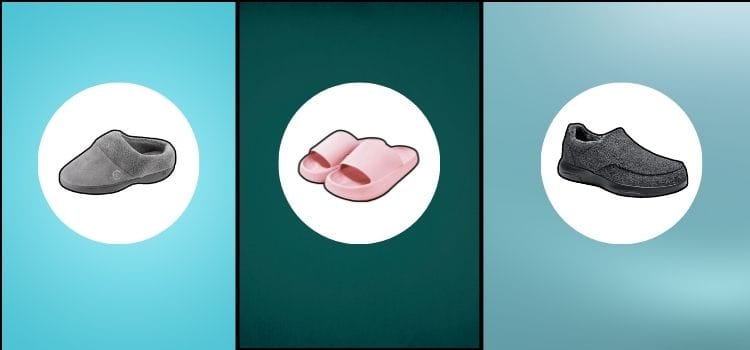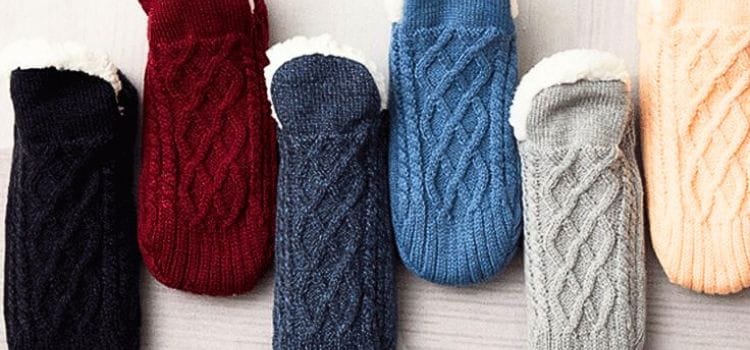Pointe Shoes vs. Ballet Slippers: Which to Choose?
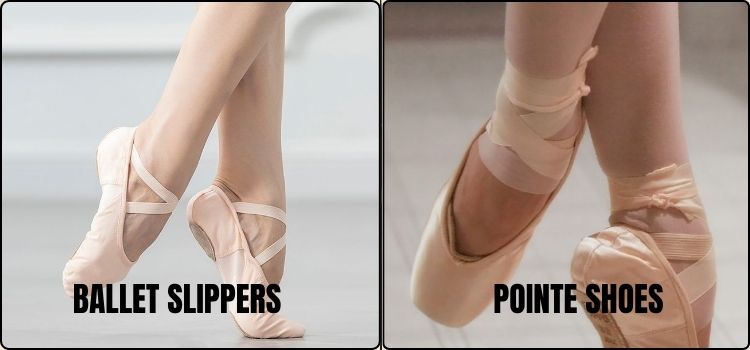
As an Amazon Associate, I earn from qualifying purchases
Got a footloose feeling, but unsure which dance shoes will have you leaping across the floor like a seasoned ballerina?
Whether you’re a pro or just plié-curious, the eternal dance-off between Pointe Shoes vs. Ballet Slippers always leads to one question: which type of footwear should lace up your dancing destiny?
Here’s your cheat sheet to pirouette like a pro. Bust out the jazz hands and prepare to learn the moves—from the bottom up.
The Breakdown of Design and Construction
Imagine your feet are about to step into a fairy tale. That’s the kind of magic you’re looking for in dance shoes. From the delicate satin to the sturdy shank and box, pointe shoes are the very definition of ballet chic. They are designed to support a dancer’s total body weight, allowing them to dance on the very tip of their toes.
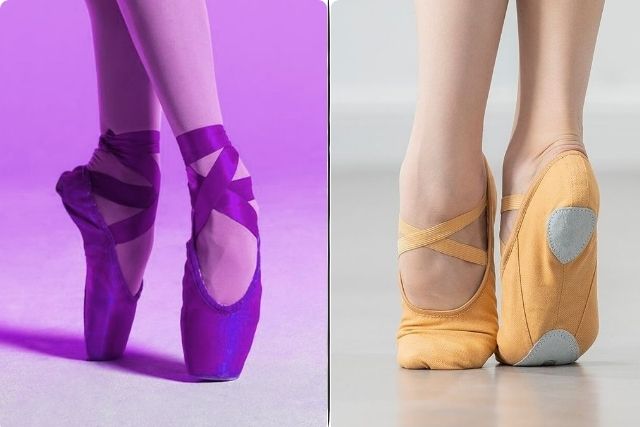
Ballet slippers, on the other hand, are your laid-back, everyday everyday dance shoes. They are crafted with more flexibility and less structure. This design keeps you grounded enough to feel the movement. They are also malleable enough to point those toes and turn with ease. Think of them as your canvas to paint the stage with effortless grace.
Weaving the Right Webs of Comfort
It doesn’t matter if you’re doing the Nutcracker with Tchaikovsky or just nailing the chassé in your living room; comfort is key. Pointe shoes are notoriously known for a break-in period that can rival any new leather jacket’s stiffness.
Once broken in, they become as supple and personalized as a beloved pair of blue jeans, molded to the unique arches and shape of your foot.
Ballet slippers, however, are often soft from the get-go, needing little to no break-in time. They’re the preferred choice for long rehearsals and classes where the last thing you need is a shoe that’s fighting back.
Functionality and Performance on the Dance Floor
Performance, after all, is in the eye of the pirouetting beholder. Pointe shoes are the Olympians of the ballet world. They enable dancers to execute technical feats. They also maintain the ethereal illusion of floating on air.
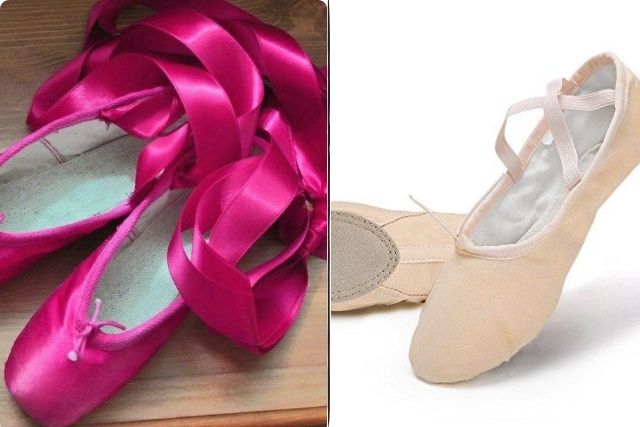
Ballet slippers, while not as extreme, offer freedom and agility not afforded by pointe shoes. They are the top choice for routine ballet classes where precision and control are the stars of the show.
What about Cost and Durability?
Sure, a dance with cost and durability is a serious thing. Pointe shoes are robust workhorses. They can last anywhere from a few hours to a couple of weeks. This depends on the dancer and the kind of dancing they do. They do need to be replaced quite frequently, less frequently than flowers, but still pretty often.
Ballet slippers, on the other hand, are your long-term commitment buddy. Their durability is often inversely proportional to the frequency and intensity of wear. They might not need a strict replacement schedule. When the time comes, they may offer little of a fight to stay on your feet.
Styling and Aesthetic Appeal
There’s something about the satin ribbons and delicate silhouette of pointe shoes that spell romance and stage allure. They’ve been the stars of many a ballet’s fashion scene, and for good reason.
Ballet slippers are the epitome of simplicity, a canvas that highlights the lines and form of the dancer’s foot. Their elegant simplicity will always be en pointe for the classic dance fashionistas who know that sometimes less is more.
Comparing Brands and Offerings
It’s like choosing between Nike and Adidas—only more elegantly French and with less endorsing of basketball megastars. Brands like Grishko, Capezio, and Freed are renowned for their pointe shoes, each with its unique fit and features.
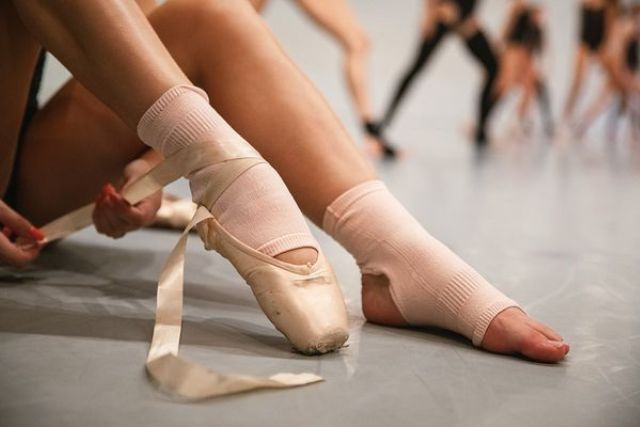
Ballet slippers have their lineup of heavy hitters, too, with Bloch, Gaynor Minden, and Repetto leading the way. These brands cater to dancers of all levels, from the studio to the stage, ensuring that style and substance are always in harmony with movement and grace.
Pros and Cons of Pointe Shoes
Pros
- Unmatched support for performances on tiptoe
- Aesthetic appeal that resonates with the ballet tradition
- The intense workout and muscle strengthening that comes with pointe work
Cons
- Limited use outside the realm of classical ballet
- Regular replacements can put a strain on the dancer’s budget
Pros and Cons of Pointe Shoes
Pros
- Comfortable from day one
- Versatile for different types of dance and activities
- Lasts longer, with less need for immediate replacement
Cons
- Less support for advanced ballet techniques
- Limited use for dances that require the raised position of pointe wor
Expert Opinions and Recommendations
For the would-be prima ballerinas, pointe work is essential. It’s not just about technique; it’s about embodying the art and history of ballet. Experts often recommend starting the transition to pointe shoes around the age of 12 or 13. This is after years of proper training in soft ballet slippers. It’s a milestone in a dancer’s life that marks dedication and progress.
And for those looking to hone their craft more casually or explore various dance styles, the versatility and comfort of ballet slippers make them an attractive choice. They’re the ideal dancing partner for the everyday guide to movement and self-expression.
Pointe Shoes vs. Ballet Slippers
In the end, dance shoes are an extension of your artistry. Each style, whether on pointe or the level, offers its unique blend of challenges and freedoms. Where you place your step depends on your personal preference. It also depends on the type of dance you love and the goals you wish to dance towards.
Your dance partner awaits. Lace up, feel the rhythm, and remember, it’s not about the shoes—it’s about the dance.
FAQ
Can I wear ballet slippers for pointe work?
No, ballet slippers are not designed to support the dancer’s weight on tiptoe and may cause injury.
How often should I replace my pointe shoes?
It varies depending on the dancer’s frequency and intensity of use, but a good rule of thumb is to replace them every 8-12 hours of dancing.
Are pointe shoes only for professional dancers?
No, anyone can wear pointe shoes as long as they have been properly trained and have the necessary strength and technique to do so safely.
Can I use ballet slippers for other types of dance?
Yes, ballet slippers are versatile and can be used for various dance styles, from ballet to jazz to contemporary. However, they may not provide enough support for certain techniques and movements.
How can I find the right fit for my dance shoes?
It is highly recommended to get fitted by a professional at a dance shoe store to ensure the best fit and support for your feet. They will take into consideration factors such as foot shape, arch type, and level of experience to find the perfect fit for your dancing needs.
As an Amazon Associate, I earn from qualifying purchases
